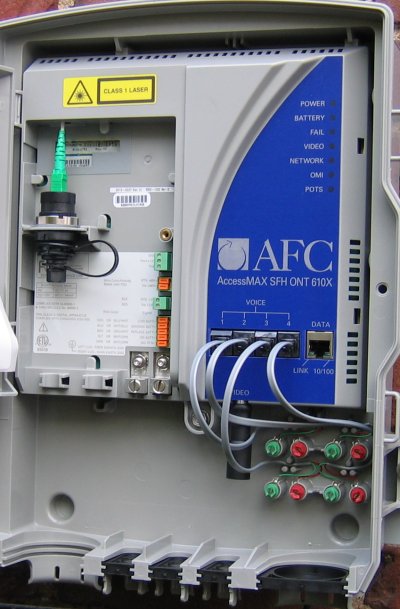Fios is Verizon’s signature Fiber Optic Service (FiOS), a telecommunications infrastructure that uses 100% fiber optic cables to deliver high-speed Internet, television (Fios TV), and Voice over IP (VoIP) phone service directly to homes and businesses. This technology is widely considered the fastest and most reliable residential broadband connection available today.
Fios is fundamentally different from traditional cable or DSL internet because it transmits data as pulses of light through thin strands of glass fiber, providing superior speed, stability, and equal upload/download capabilities (symmetrical speeds). This article explains the technology, the key benefits, and where the service is available.

-
Fios Technology: How Fiber Works
Fios stands for Fiber Optic Service, signifying that the network connection is made entirely of fiber optic lines running all the way to the customer’s location (known as Fiber-to-the-Home, or FTTH).
Fiber vs. Cable: The Core Difference
| Feature | Verizon Fios (Fiber) | Traditional Cable Internet |
| Connection Material | 100% Fiber Optic Glass Strands | Copper Coaxial Cable (Hybrid Fiber-Coax) |
| Data Transmission | Light Pulses (highly stable) | Electrical Signals (susceptible to interference) |
| Speed Symmetry | Symmetrical: Upload speeds nearly match download speeds (e.g., 500 Mbps down / 500 Mbps up). | Asymmetrical: Upload speeds are significantly slower than download speeds (e.g., 500 Mbps down / 10-50 Mbps up). |
| Congestion/Reliability | High Reliability: Less prone to speed slow-down during peak usage times. | Variable Reliability: Speeds can slow significantly when neighbors are also online. |
The Fios Equipment at Your Home
When Fios is installed, two main pieces of equipment are set up to bridge the light-based network to your home’s devices:
- Optical Network Terminal (ONT): A box installed either inside or outside your home. The ONT is crucial, as it performs the conversion of the incoming light signals from the fiber cable into the electrical signals (Ethernet or Coax) that your router and devices can use.
- Fios Router: This device connects to the ONT and manages your home Wi-Fi network, distributing the high-speed internet connection to your computers, phones, and streaming devices.
- Key Benefits of Choosing Fios Services
Fios’s fiber-optic foundation translates into several significant advantages for the end user compared to older broadband technologies.
- Symmetrical Speeds
Fios plans (such as Fios 300 Mbps, 500 Mbps, 1 Gig, and 2 Gig) offer download and upload speeds that are nearly identical. This symmetrical capability is essential for modern high-bandwidth activities:
- Remote Work and Videoconferencing: Symmetrical speeds eliminate freezing and choppy video during large group calls.
- Cloud Services: Uploading large backups, photos, and video projects to the cloud happens nearly instantly.
- Gaming: Fast uploads reduce latency and lag, providing a smoother experience for competitive online gaming.
- High Reliability and Low Latency
Fiber is inherently more reliable than copper. It is less susceptible to electromagnetic interference, electrical noise, and degradation over long distances, resulting in a more stable connection and less chance of service outages due to weather. The speed of light also translates to low latency (ping time), which is crucial for real-time applications.
- No Contracts and No Data Caps
All core Verizon Fios Internet plans are offered with no annual contract and no data caps. This means customers can use as much data as they want without worrying about overage fees or throttling, and they are free to cancel or change their plan at any time without penalty. Many plans also come with a multi-year price guarantee, providing stability against rate hikes.
- Verizon Fios Services and Availability
Fios is more than just internet; it is a full suite of communication services bundled onto a single fiber line.
Fios Product Offerings
- Fios Internet (Fios Home Internet): High-speed broadband with tiers ranging from 300 Mbps up to 2 Gig (2,300 Mbps symmetrical in some areas).
- Fios TV: Digital television service featuring HD picture quality, customizable channel options (like Your Fios TV), and 4K-compatible set-top boxes and DVR service.
- Fios Digital Voice: Voice over IP (VoIP) home phone service delivered over the fiber network, offering clear call quality and advanced features.
Fios Availability
While Fios is a premium service, its availability is limited because installing a 100% fiber network is an expensive, complex, and time-consuming process.
- Geographic Focus: Verizon Fios is concentrated almost entirely in the Northeast and Mid-Atlantic regions of the United States.
- States Served: Fios is currently available in parts of Delaware, Maryland, Massachusetts, New Jersey, New York, Pennsylvania, Rhode Island, Virginia, and Washington, D.C.
- Major Metro Areas: Key cities with high Fios coverage include New York City, Philadelphia, Boston, Pittsburgh, Baltimore, and Washington, D.C.
Frequently Asked Questions
Is Fios better than cable internet?
Yes, in terms of technology, Fios is superior. Fiber offers symmetrical speeds, lower latency, and better resistance to network congestion and interference compared to traditional asymmetrical cable internet (Hybrid Fiber-Coax). For heavy data users, gamers, and remote workers, Fios provides a noticeable performance advantage.
Does Fios require professional installation?
Yes, Fios typically requires professional installation. A technician must install the fiber-optic cable from the street to your home and set up the Optical Network Terminal (ONT) to convert the light signal. While some self-installation options are becoming available for the modem/router inside the house, the initial fiber line setup is usually mandatory.
Does Fios ever slow down?
The Fios fiber-optic line directly to your home is less prone to congestion than shared cable networks. While speeds can still be affected by internal factors (like old routers or poor Wi-Fi range), Fios provides a highly consistent connection that maintains high speeds even during neighborhood peak usage times (evenings and weekends).
What is the Fios 1 Gig speed?
The Fios 1 Gig plan offers speeds up to 940 Mbps download and 880 Mbps upload. This tier is commonly referred to as “Gigabit” service and provides exceptional speed and bandwidth for large, multi-device households.


